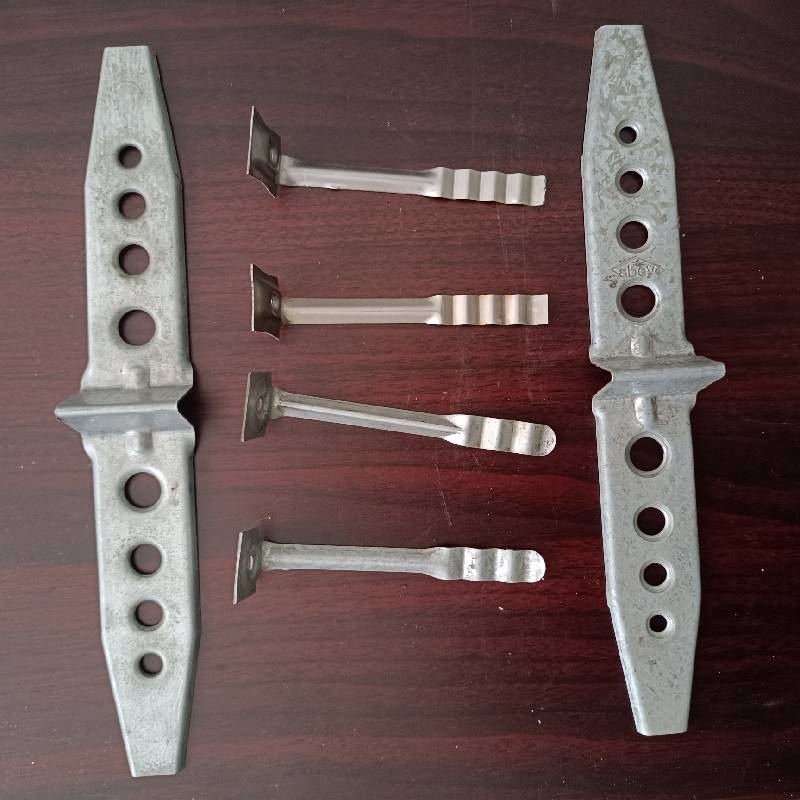
- Mobile Phone
- +8613931874955
- sales@cntcmetal.com
what are brick ties used for
Understanding Brick Ties Their Purpose and Importance in Construction
When it comes to masonry construction, particularly in brickwork, one might overlook the importance of certain components that ensure the structural integrity and safety of buildings. One such component is the brick tie, a seemingly simple yet crucial element used extensively in the construction industry. This article delves into what brick ties are, their functions, types, and significance in providing stability and durability to brick structures.
What Are Brick Ties?
Brick ties, also known as masonry ties or brick anchors, are metal components used to connect brick veneer to the underlying structural framework of a building, typically made of wood or steel. They help hold the two components together, ensuring that the brick cladding remains securely attached to the supporting structure. This connection is particularly vital in facades and walls where the brickwork serves both aesthetic and protective functions.
The Functions of Brick Ties
1. Structural Support The primary purpose of brick ties is to provide additional support to brick walls. When constructed, brick veneers tend to be non-structural, meaning they do not support any loads. Brick ties ensure that these veneers stay attached to the structural framework, able to bear wind loads and other forces without detaching.
2. Lateral Stability Brick ties prevent the brick veneer from moving independently of the structural wall. They mitigate the risk of collapse or displacement caused by lateral forces, such as those generated by high winds or seismic activities. This stabilization is crucial for the safety and longevity of the structure.
3. Moisture Management Brick ties can also aid in moisture management. They facilitate a proper drainage system within the wall assembly. By providing a space between the brick veneer and the structural wall, brick ties help in promoting evaporation and reducing the chances of moisture buildup, which can lead to mold and other forms of deterioration.
4. Integration with Insulation In modern construction, brick ties are designed to work seamlessly with insulation systems. This integration helps maintain thermal efficiency, ensuring that buildings remain energy-efficient while using brick as a cladding material. By properly securing the brick veneer, ties also support the insulation sheathing applied to the structural wall.
what are brick ties used for

Types of Brick Ties
Brick ties come in various designs and materials, suited for different applications and building requirements. Common types include
- Continuous Ties Typically made of galvanized steel, these ties are installed horizontally between courses of brick, providing fixed connections throughout the wall. - Panel Ties Used in diverse applications, panel ties help support large masonry panels, distributing the load and reducing the risk of cracking from settling or shifting.
- Vented Ties These are designed with weep holes that allow moisture to escape from behind the brick veneer. They are particularly effective in climates where rainfall is frequent.
- Adjustable Ties Designed to allow for variations in thickness between the veneer and the structural wall, adjustable ties provide flexibility during construction.
Importance in Modern Construction
As construction methods evolve, the significance of brick ties continues to grow. They are vital in adhering to modern building codes and standards, which emphasize safety and longevity. Poorly installed or inadequate ties can lead to severe issues, including wall failure, moisture infiltration, and resultant structural damage.
Moreover, they contribute to the overall aesthetics of the building. A well-secured brick facade enhances the visual appeal while ensuring that the building stands the test of time against environmental challenges.
In conclusion, brick ties play an essential role in masonry construction, providing support, stability, and moisture management. Understanding their purpose is crucial for architects, builders, and homeowners alike. As buildings become more complex and the demand for durable structures increases, the necessity of quality brick ties becomes even more significant in ensuring architectural integrity and safety.
share:
-
Why Sacrificial Formwork Is Redefining Underground ConstructionNewsJun.06,2025
-
The Structural Dynamics of Modern Concrete: How Snake Spacers Revolutionize Flexible ReinforcementNewsJun.06,2025
-
Snake Spacers Smart-Lock Concrete Reinforcement with Surgical PrecisionNewsJun.06,2025
-
Snake Spacers: Reinforcement Precision for Modern Concrete ProjectsNewsJun.06,2025
-
Snake Spacers Powering Concrete's Structural DNANewsJun.06,2025
-
Slither into Success: Snake Spacers' Precision Bite for Unbreakable ReinforcementNewsJun.06,2025
-
Sacrificial Formwork: Building Stronger, Faster, and Safer StructuresNewsJun.06,2025



















